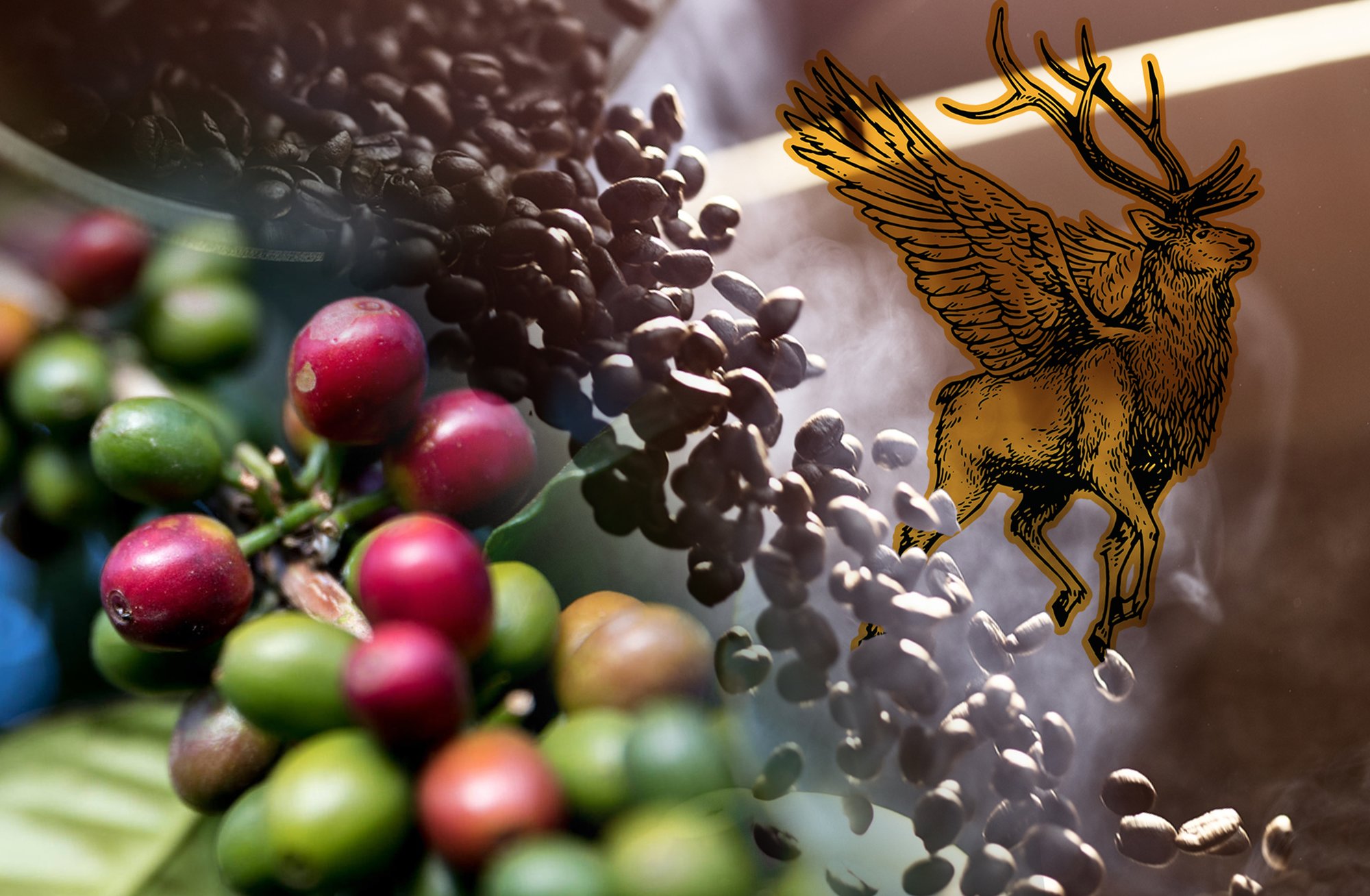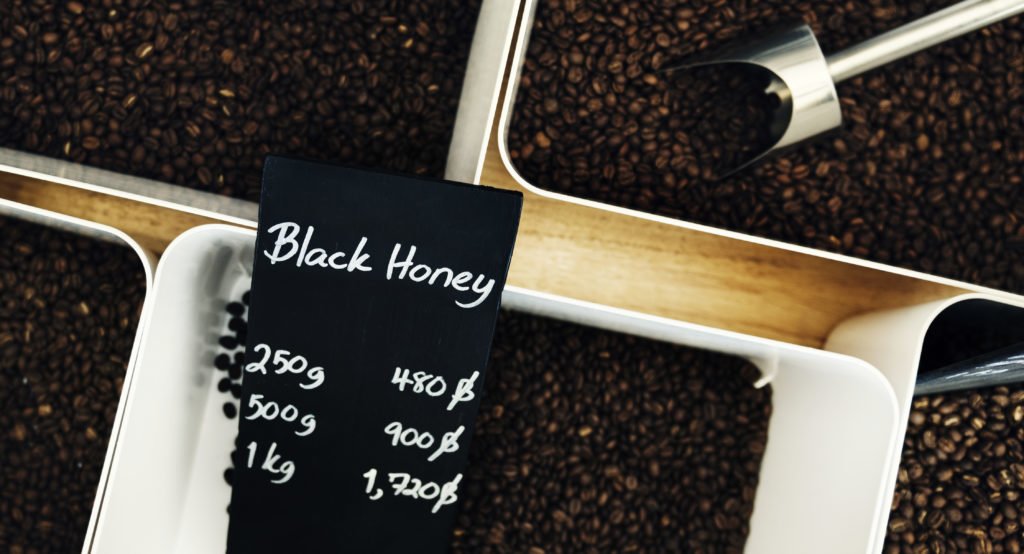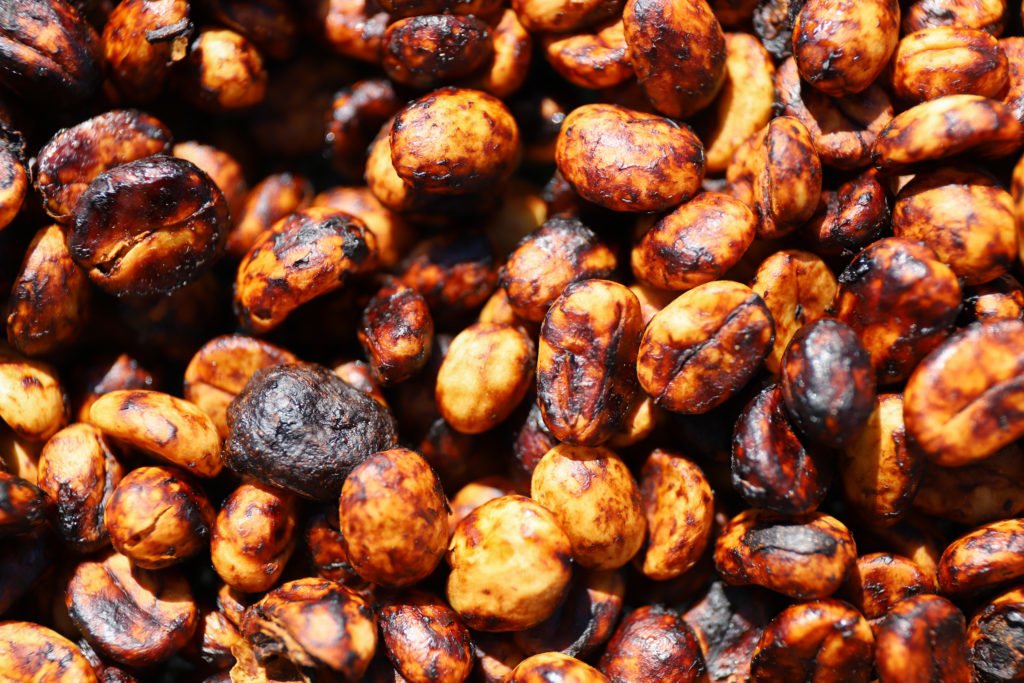
Our favorite part of the morning has a very intricate creation process. It takes time, patience, and sometimes a village to produce our favorite caffeinated beverage.
Coffee can be processed in many different fashions: washed, natural dry, or honey. The honey process doesn’t result in the same type of honey you’d find in an industrious beehive, but the process does leave behind a golden, sticky texture. It’s also less common than the other two processes.
In their beginning stage, coffee beans are actually the seeds of coffee cherries, a small fleshy fruit that is high in antioxidants and contains — you guessed it — caffeine. In order to dry the seeds and prepare them for roasting, the outer flesh needs to be removed. This can happen a few different ways: the wet process, the dry process, or a combination of the two — the honey process. With this unique approach to drying, coffee producers remove the cherry’s skin but leave the fleshy inside, known as the mucilage, on the seed while drying. This mucilage is where the process gets the honey name; it’s golden in color, sweet in taste, and sticky to the touch.

The process was adapted in 1991 in the depths of Costa Rica. There are variations of the operation that produce different types of “honey.” Some of the more popular versions are white, yellow, gold, red, and black. The difference between the lighter and darker hues lies within the amount of mucilage present. Less mucilage after washing results in a white or yellow honey finish; more mucilage leads to gold, red, and black. Coffee connoisseurs often prefer more texture to be left behind as it means more of the sugar and natural acids that give the brewed coffee its bold, distinctive taste.
While all processes require time and precision, black honey coffee is by far the most advanced and the most complex. It’s the rarest of brews and is often only available in scarce quantities during certain times of the year.
The intricacy of the process begins with the mucilage, which is left completely intact on black honey coffee beans. The beans are then placed on coffee beds to dry. During this critical aspect of the process, the producer must be mindful of over-fermentation, which would destroy the integrity of the flavor. The beans are left for approximately 15 days, covered by a secure tarp with minimal to no light. Timing is everything during this process — drying the beans too quickly or for too long would ruin their exceptional flavoring.

Finding the balance isn’t always easy, but some experts have perfected the art by raising the beans on their beds while drying and ensuring that proper maintenance is in place.
Black honey coffee requires constant attention and movement, which includes raking the beans multiple times an hour until they have matured by reaching the desired moisture percentage. Putting the coffee through some mild turbulence extracts the caramelized, balanced notes we all crave in our cup of joe. Once the beans are ready, the black honey coffee beans are ready to be roasted.
It’s a lengthy and complicated process, but in the end, is it really worth it?
Coffee aficionados from across the world seem to think so. The honey process, though by far the most intense, results in an extraordinary cup of coffee. The black honey, for instance, is ideal for espressos, emitting delicious hints of chocolate, spice, and — believe it or not — honey.

BRCC and Bad Moon Print Press team up for an exclusive, limited-edition T-shirt design!
BRCC partners with Team Room Design for an exclusive T-shirt release!
Thirty Seconds Out has partnered with BRCC for an exclusive shirt design invoking the God of Winter.
Lucas O'Hara of Grizzly Forge has teamed up with BRCC for a badass, exclusive Shirt Club T-shirt design featuring his most popular knife and tiomahawk.
Coffee or Die sits down with one of the graphic designers behind Black Rifle Coffee's signature look and vibe.
Biden will award the Medal of Honor to a Vietnam War Army helicopter pilot who risked his life to save a reconnaissance team from almost certain death.
Ever wonder how much Jack Mandaville would f*ck sh*t up if he went back in time? The American Revolution didn't even see him coming.
A nearly 200-year-old West Point time capsule that at first appeared to yield little more than dust contains hidden treasure, the US Military Academy said.












